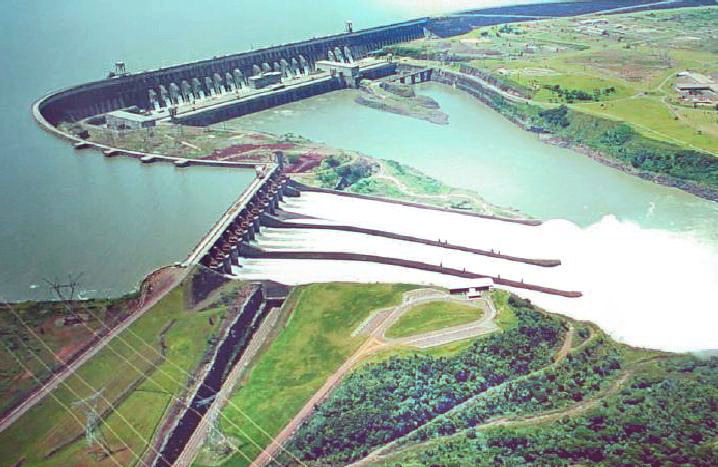
By Peter Tase
In December 30, 2013, the energy output of the Itaipú hydroelectric dam – which is shared by Brazil and Paraguay along the Paraná River in South America – achieved 98.3 million megawatts per hour last year, thus setting a new world record for renewable energy production. The previous record of 98.2 million megawatts was set in 2012, also by Itaipú. The energy produced by the bi-national hydroelectric dam is enough for power up the entire world for two days. By other measures, it would be enough to supply Brazil’s energy requirements for 79 days, or almost ten months for nearby Argentina, or eight years for Paraguay. The facility produces more electricity than any other hydroelectric dam in the world.
Moreover, the energy needs of Latin America (Brazil excepted) could be generated by Itaipú for 89 days, while the requirements for the United States could be satisfied for eight days. This is the greatest output ever achieved by the 29 year-old hydroelectric dam.
According to James Spalding, the Paraguayan General Director of Itaipu and Former Ambassador to Washington, D.C., “This great production of energy was accomplished thanks to the favorable management conditions that were achieved in 2013, including the high demand for energy in the regional market, excellent functioning of technological equipment. This has allowed for Itaipú to have the one of the lowest margins of error and technological failure in the world, while taking into account that Itaipu’s turbines and other supporting operational equipment are used in more than 96 percent of the time. This quota has made possible additional revenue of $6.5 million for the Paraguayan Government.”
Although ITAIPU is the largest Hydroelectric Dam in the World, run by Paraguay and Brazil, its revenue generated for the national treasury has not had a significant contribution towards improving and up keeping the electrical grid of Paraguay. In January 13, Victor Romero Solis, president of the National Administration of Electricity (ANDE) and ITAIPU Councilor, subsequent to the first meeting of National Energy for 2014, announced that the Master Plan of works in the period 2014-2024, in the electrical grid sector is making headway.
Mr. Romero added: “the plan of Electrical Works in Paraguay, during this period is consisting an investment of US$5.39 billion in the purchase of generators, construction of new transmission and distribution lines in the next ten years.”
During the period of 2014-2018 the investment in the ANDE will be approximately US$2.87 billion, with these investments there will be guaranteed a better supply of electrical energy in the Paraguayan territory.
Mr. Romero emphasized that the system of distributing electricity continues to be fragile due to installations. “In the upcoming years there will be a full replacement of current cables with protected cables in order to guarantee a better service and a more secured electrical grid. During the period of 2014-2023 there will be invested more than US$5.3 billion. As of right now the Paraguayan Government has obtained only one billion US Dollars from international institutions and will continue to find other sources in order to secure the remaining amount of US$4.39 billion.”
The Itaipú bi-national dam is located on the Paraná River, which forms the border between Paraguay and Brazil. The Parana River stretches in more than three thousand miles, including the Paranaiba and Grande rivers. It has a basin that covers over 2 million square miles and is one of the major rivers in the World. It came into being when the Paraguayan and Brazilian governments signed a treaty in 1973 to develop the hydroelectric resources of the Parana River from Salto Del Guairá to the mouth of the Yguazú river.
Sources:




